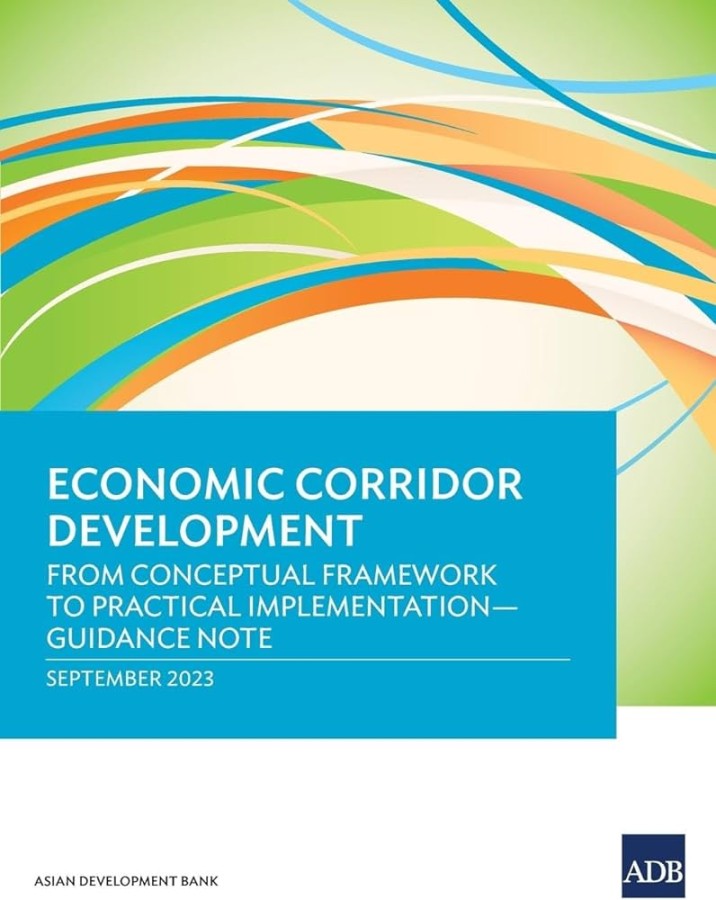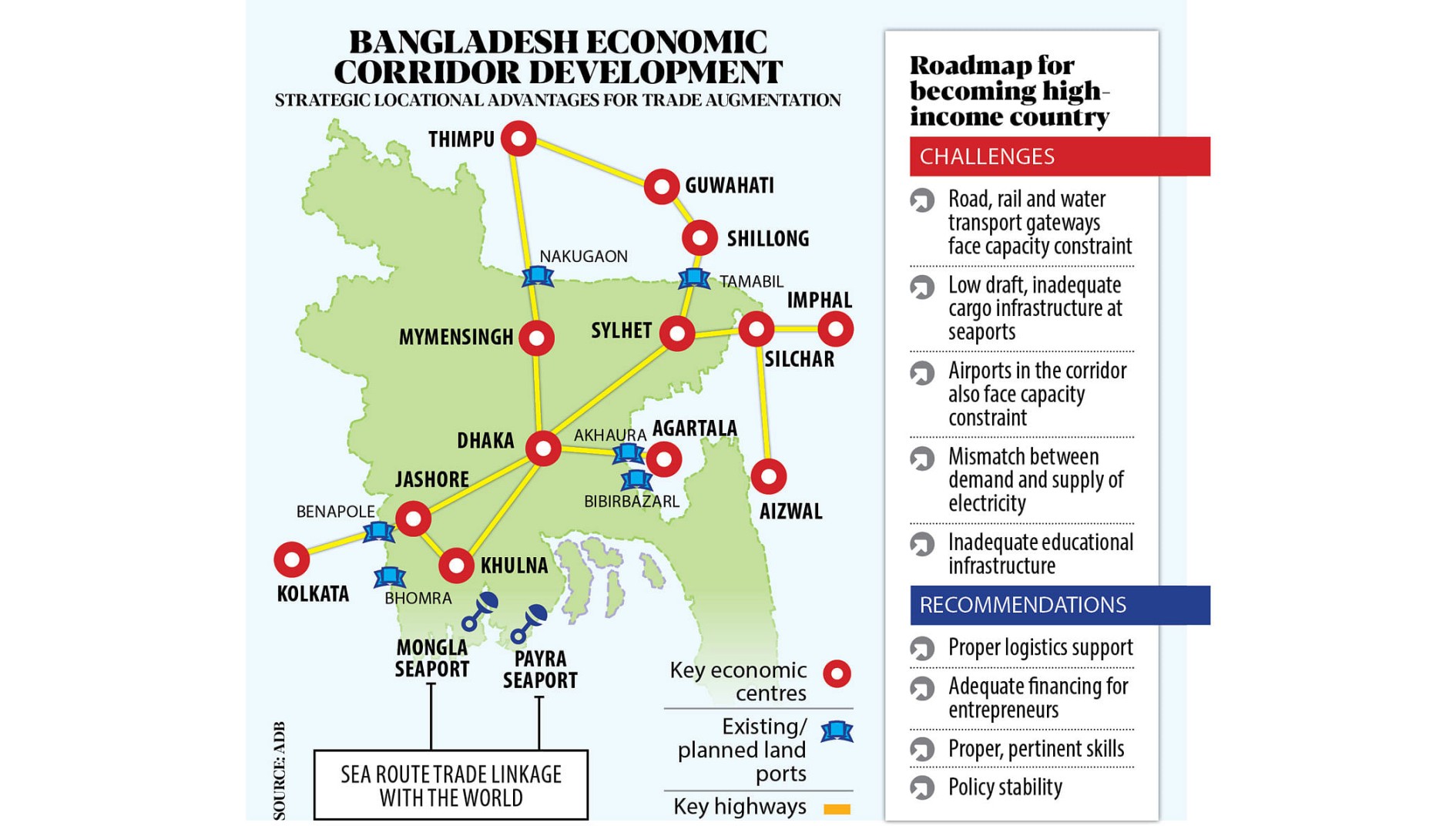Economic Corridor Development: A Comprehensive Overview
Introduction
Economic corridor development (ECD) has emerged as a strategic approach to fostering regional integration and promoting sustainable economic growth. By linking key economic centers through a network of infrastructure, policy harmonization, and institutional cooperation, ECDs aim to enhance trade facilitation, attract investment, and stimulate economic activities along designated corridors.

Defining Economic Corridors
Economic corridors are not merely physical infrastructure networks; they encompass a broader concept of spatial development that integrates infrastructure, policy, and institutional frameworks to create an enabling environment for economic activities. They typically span across multiple geographical jurisdictions, connecting production hubs, consumption centers, and transit points.
Key Characteristics of Economic Corridors

ECD initiatives are characterized by several key features that distinguish them from traditional infrastructure development projects:
1. Spatial Focus: ECDs focus on specific geographical areas, often along transportation corridors, where economic activities can be concentrated and synergies can be realized.
2. Integrated Approach: ECDs combine infrastructure development with policy harmonization, institutional strengthening, and trade facilitation measures to create a conducive environment for economic growth.
3. Multi-Stakeholder Engagement: ECDs involve active participation from various stakeholders, including governments, private sector, civil society, and development partners, to ensure inclusive and sustainable development.
4. Long-Term Perspective: ECDs are long-term endeavors that require sustained commitment and collaboration among stakeholders to achieve their full potential.
Benefits of Economic Corridor Development
ECDs offer a range of potential benefits for participating countries and regions, including:
1. Enhanced Regional Connectivity: Improved infrastructure networks facilitate the movement of goods, people, and services, reducing trade costs and boosting regional trade.
2. Investment Promotion: ECDs attract investment by creating a stable and predictable business environment, access to markets, and skilled labor.
3. Economic Diversification: ECDs encourage the development of new industries and value-added activities, reducing reliance on traditional sectors.
4. Poverty Reduction and Inclusive Growth: ECDs can promote employment opportunities, improve livelihoods, and contribute to poverty reduction, particularly in rural areas.
5. Sustainable Development: ECDs can incorporate sustainable practices, such as green infrastructure and energy-efficient technologies, to minimize environmental impacts.
Challenges and Considerations for ECD Implementation
Despite the potential benefits, ECD implementation faces several challenges that need to be addressed:
1. Financing: Mobilizing adequate financing from both public and private sources is crucial for infrastructure development and supporting initiatives.
2. Governance and Institutional Coordination: Effective coordination among national and local governments, as well as regional institutions, is essential for policy harmonization and regulatory alignment.
3. Community Engagement and Social Impacts: Ensuring stakeholder participation and mitigating potential negative social impacts, such as land displacement and environmental degradation, is critical.
4. Sustainability and Maintenance: Long-term sustainability of infrastructure and institutional mechanisms requires proper maintenance, financing, and capacity building.
5. Monitoring and Evaluation: Establishing robust monitoring and evaluation frameworks is essential to track progress, identify challenges, and adapt strategies accordingly.
Case Studies of Successful Economic Corridors
Several examples of successful ECD initiatives demonstrate the transformative potential of this approach:
1. The Greater Mekong Subregion (GMS) Economic Corridors: The GMS program has established six economic corridors that have significantly enhanced regional connectivity, trade, and investment in Southeast Asia.
2. The Southern African Development Community (SADC) Regional Development Corridors: SADC has developed regional corridors that have promoted trade, infrastructure development, and economic cooperation among member states.
3. The North-South Economic Corridor (NSEC) in India: The NSEC has connected India’s landlocked northeastern states with the rest of the country, boosting economic activity and reducing poverty.
4. The East Coast Economic Corridor (ECEC) in India: The ECEC aims to transform India’s eastern coast into a manufacturing and export hub, leveraging its strategic location and infrastructure.
5. The China-Pakistan Economic Corridor (CPEC): The CPEC is a large-scale infrastructure development project that aims to connect China’s western regions with Pakistan’s Gwadar Port, fostering trade and investment.
The Future of Economic Corridor Development
ECD is an evolving concept that is continuously adapting to address emerging challenges and opportunities. As technology advances and global trade patterns shift, ECDs will need to incorporate new elements such as digital connectivity, green infrastructure, and resilient supply chains.
Conclusion
Economic corridor development offers a promising approach to promoting regional integration, sustainable economic growth, and poverty reduction. By addressing the challenges and embracing innovative solutions, ECDs can play a pivotal role in shaping a more prosperous and interconnected global future.
Frequently Asked Questions (FAQs)
Economic corridors encompass a broader concept than transportation corridors, extending beyond physical infrastructure to include



